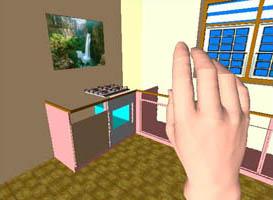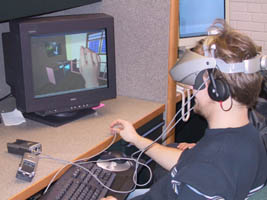
The large body of accumulated knowledge over the last 100 years regarding localization of brain function has been based on "clinical pathological correlation," that is, observing the clinical deficits seen after brain damage and then correlating the impairments with the localization of the lesion(s) observed on imaging or at autopsy.

However, observed deficits in motor control may in fact be the result of a complex interplay between attention, motor planning, motor execution and sensory input. BIAC is using immersive environment technologies ("virtual reality") to untangle and assess performance in constituent areas that may contribute to overall motor performance in brain-damaged and normal control subjects. Such methods may be used to determine the specific deficits in a given individual, so that therapy could be specifically targeted to problem areas.
